
Aya Yesentayeva
Luxury Hotelier | Travel Enthusiast
While many know KSA as the world’s largest oil exporter, few realise that this powerhouse nation shares borders with eight different countries, making it one of the most interconnected states in the Middle East. This unique geographical position of Saudi Arabia Neighbours has shaped not just the kingdom’s diplomatic relations, but also its cultural identity and economic strategies.
From the ancient frankincense routes through Yemen to the ultra-modern King Fahd Causeway connecting to Bahrain, Saudi Arabia’s borders tell a fascinating story of regional dynamics, historical ties, and modern geopolitical challenges.
These neighbouring relationships have become increasingly crucial in an era where regional cooperation determines everything from economic success to security stability.
Geographical Location of Saudi Arabia
Saudi Arabia dominates the Arabian Peninsula, occupying approximately 2.15 million square kilometres of territory. This vast kingdom stretches from the Red Sea in the west to the Persian Gulf in the east, encompassing most of the peninsula’s landmass. The country shares borders with Jordan, Iraq, Kuwait, Qatar, the United Arab Emirates, Oman, and Yemen.
With its strategic position, Saudi Arabia controls vital maritime routes through its 2,640 kilometres of coastline along the Red Sea and the Persian Gulf. This location has historically made the kingdom a crucial crossroads for trade between Asia, Africa, and Europe.
The country’s geography includes diverse terrain, from the coastal plains to the Empty Quarter desert, which covers much of its southern interior.
Overview of Saudi Arabia’s Socio-Political Context
Saudi Arabia operates as an absolute monarchy, with the Al Saud family maintaining governance since the kingdom’s establishment in 1932. The country serves as a key regional power in the Middle East, wielding significant influence through its leadership of the Gulf Cooperation Council and its role as custodian of Islam’s two holiest sites, Mecca and Medina.
The kingdom’s economic might stems from its position as the world’s largest oil exporter, controlling roughly 17% of global petroleum reserves. This wealth has enabled Saudi Arabia to modernise rapidly while maintaining traditional social structures. Through Vision 2030, the country is actively diversifying its economy beyond oil dependency, investing in sectors like tourism, technology, and renewable energy.
Importance of Neighboring Countries in Regional Dynamics
The significance of Saudi Arabia’s neighbors extends far beyond mere geographical proximity. Jordan, for instance, serves as a crucial buffer state and strategic partner, collaborating closely with the kingdom on security matters and regional stability.
These neighboring relationships profoundly influence trade patterns, with cross-border commerce flowing through established routes that have existed for centuries.
Cultural ties bind these nations together through shared linguistic, religious, and tribal connections, particularly evident in the Gulf states. The kingdom’s relationships with its neighbors also play a vital role in maintaining regional security, as demonstrated through joint military exercises and intelligence sharing.
These partnerships have become increasingly important in addressing common challenges like terrorism, economic development, and resource management, making neighboring countries indispensable to Saudi Arabia’s regional influence and stability.
Jordan

Jordan shares a significant 731-kilometre border with Saudi Arabia to the north, forming a vital strategic partnership in the region.
The shared boundary runs through desert terrain, with major crossing points facilitating trade and movement between the nations.
The cultural ties between Jordan and Saudi Arabia run deep, rooted in shared Arab heritage, Islamic traditions, and Bedouin customs.
Both countries maintain strong diplomatic relations, reinforced by regular high-level visits and mutual cooperation agreements.
Economic partnerships flourish through bilateral trade agreements and joint ventures, particularly in sectors like tourism and construction. The countries collaborate on major infrastructure projects and cross-border investments, strengthening their economic bonds.
For travellers and expatriates, the Jordan-Saudi relationship enables smooth border crossings and visa processes. Regular flight connections between major cities facilitate business travel and tourism, while shared cultural understanding makes expatriate integration easier in both nations.
This robust partnership continues to evolve, with both countries working together on regional security initiatives and economic development programmes that benefit their populations and the broader Middle East region.
Iraq

Geographical Border
Iraq shares a 814-kilometre border with Saudi Arabia to the north, characterised by vast desert terrain and strategic crossing points.
This boundary area, known as the Neutral Zone until 1981, now features modern customs facilities and security installations.
Cultural Ties
Both nations share deep-rooted Arab cultural heritage and Islamic traditions, though Iraq’s population represents a more diverse religious makeup.
The countries maintain diplomatic relations despite historical tensions, with cultural exchange programmes fostering understanding between their peoples.
Economic Partnerships
Trade relations focus primarily on oil sector cooperation and cross-border commerce. Saudi Arabia and Iraq collaborate through OPEC, coordinating oil production policies and market strategies. Recent years have seen increased bilateral trade agreements and investment opportunities.
Historical Context
Relations have experienced significant fluctuations, particularly during the Gulf Wars. However, diplomatic ties have steadily improved since 2015, marked by the reopening of the Saudi embassy in Baghdad and increased high-level diplomatic exchanges.
Impact on Travel
Border crossings between the two nations operate with standardised procedures, though security measures remain stringent. Regular flights connect major cities, facilitating business travel and religious tourism.
Impact on Expatriates
The expatriate communities in both countries benefit from improving bilateral relations, with easier visa processes and increased business opportunities. Cultural similarities help facilitate integration, particularly for Arab professionals working across borders.
Kuwait
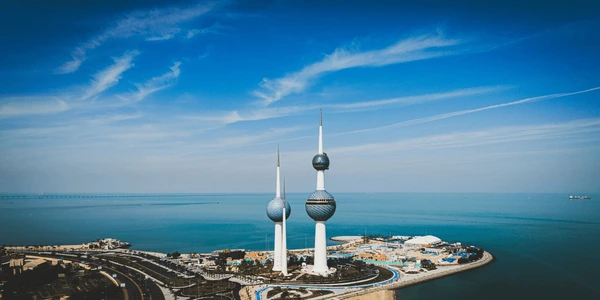
Geographical Border
Kuwait shares a 222-kilometre border with Saudi Arabia to the northeast, featuring strategic checkpoints like the Khafji crossing. The border region encompasses both desert terrain and vital oil fields that span the territory between both nations.
Cultural Ties
Strong familial and tribal connections bind Kuwait and Saudi Arabia, with shared traditions in music, cuisine, and social customs. Both nations celebrate similar Gulf Arab cultural practices and maintain close religious affiliations through Sunni Islamic heritage.
Economic Partnerships
The oil sector forms the backbone of bilateral economic relations, with both countries coordinating closely within OPEC. Joint ventures in petrochemicals, banking, and real estate demonstrate their robust economic cooperation, particularly in the Neutral Zone’s shared oil resources.
Historical Context
Kuwait-Saudi relations strengthened significantly after the 1990 Gulf War, with Saudi Arabia playing a crucial role in Kuwait’s liberation. This watershed moment cemented their alliance and led to enhanced security cooperation.
Impact on Travel
Modern transportation infrastructure connects major cities, with efficient border procedures facilitating regular movement between the countries. Business travel and family visits flow smoothly through well-established routes.
Impact on Expatriates
Expatriates benefit from similar workplace cultures and regulatory frameworks in both countries. Professional qualifications are often mutually recognised, enabling career mobility across borders.
Qatar
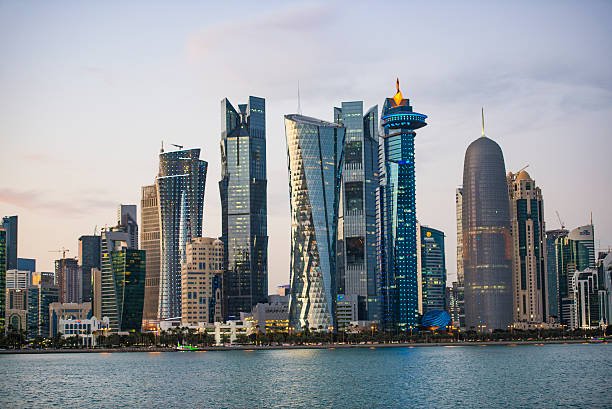
Geographical Border
Qatar shares a land border with Saudi Arabia to the south, spanning approximately 60 kilometres.
This strategically important frontier connects the peninsula to the Arabian mainland through the Salwa border crossing point.
Cultural Ties
Deep-rooted cultural connections exist between Qatar and Saudi Arabia, with shared Gulf Arab traditions, dialect similarities, and common tribal heritage.
Both nations embrace similar Islamic customs and social practices, though Qatar maintains its distinct cultural identity.
Economic Partnerships
The countries have historically maintained strong economic ties through energy sector collaboration and trade agreements. However, recent diplomatic challenges have reshaped their economic relationship, particularly affecting cross-border commerce and joint ventures.
Historical Context
Relations between Qatar and Saudi Arabia have experienced significant fluctuations, with periods of close cooperation interrupted by diplomatic tensions. The 2017-2021 diplomatic crisis marked a challenging period, though subsequent reconciliation efforts have helped stabilise relations.
Impact on Travel
Border movement regulations have evolved with changing diplomatic circumstances. While travel procedures remain standardised, recent years have seen adjustments to visa requirements and crossing protocols, affecting both tourism and business travel.
Impact on Expatriates
The expatriate communities have adapted to shifting bilateral dynamics. Professional mobility between the countries continues, though with increased attention to compliance with current regulations and documentation requirements.
United Arab Emirates (UAE)
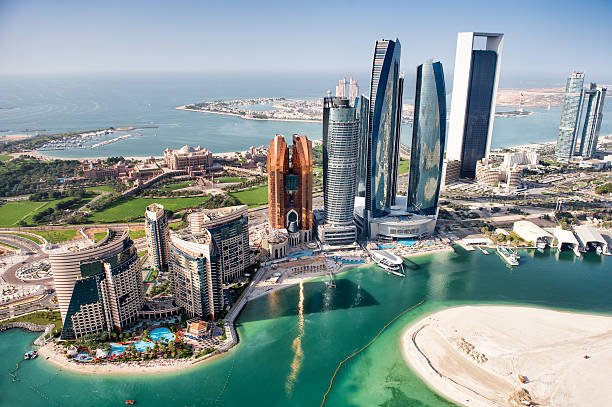
Geographical Border
The UAE shares a 457-kilometre border with Saudi Arabia along its western frontier. This strategic boundary features the Al-Ghuwaifat crossing point, a vital link facilitating trade and travel between the two nations.
Cultural Ties
Deep-rooted tribal connections and shared Gulf Arab heritage unite both countries. Common religious practices, traditional customs, and similar dialects strengthen their cultural bond. The nations celebrate similar festivals and maintain comparable social structures.
Economic Partnerships
Robust bilateral trade and investment mark UAE-Saudi relations, with joint ventures spanning real estate, technology, and renewable energy. The countries collaborate through the Gulf Cooperation Council, coordinating economic policies and development strategies.
Historical Context
Relations have consistently grown stronger since the UAE’s formation in 1971. Saudi Arabia played a significant role in supporting the federation’s establishment, leading to decades of strategic partnership.
Impact on Travel
Modern infrastructure enables seamless movement between the countries, with multiple daily flights connecting major cities. The border crossing process remains efficient, supporting business travel and tourism.
Impact on Expatriates
Professionals enjoy considerable mobility between both nations, benefiting from similar business environments and regulatory frameworks. Cultural familiarity aids expatriate integration, while aligned visa policies facilitate cross-border employment opportunities.
Oman
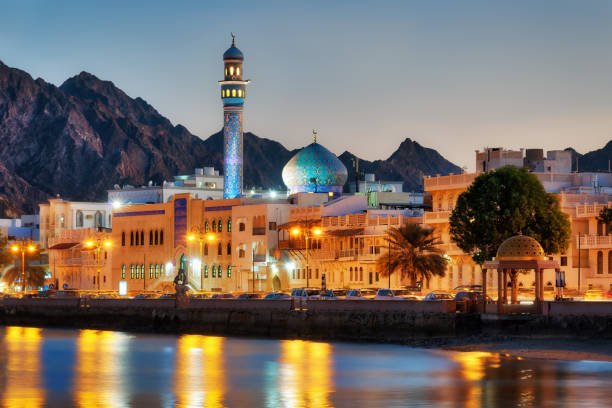
Geographical Border
Oman shares a 676-kilometre border with Saudi Arabia along its western frontier. The boundary traverses the Rub’ al Khali (Empty Quarter) desert, with key crossing points facilitating trade and movement between the nations.
Cultural Ties
Oman and Saudi Arabia share deep Islamic heritage and traditional Arab customs, though Oman’s distinct Ibadi Islamic tradition sets it apart. Maritime trading history has shaped Omani culture, creating unique coastal traditions while maintaining strong peninsular connections.
Economic Partnerships
Bilateral trade focuses on energy resources, manufacturing, and tourism sectors. The countries collaborate on infrastructure development and cross-border investments, particularly in their shared border regions. Recent agreements have strengthened economic cooperation in technology and renewable energy projects.
Historical Context
Ancient trade routes connecting Arabia to the Indian Ocean have historically linked these nations. Traditional frankincense routes and maritime commerce established lasting connections that continue to influence modern relations.
Impact on Travel
Modern transportation infrastructure enables efficient movement between both countries. Regular flights connect major cities, while desert crossing points serve commercial traffic and tourism needs.
Impact on Expatriates
Professional communities benefit from streamlined visa processes and similar business environments. Cultural familiarity helps expatriates adapt, while shared Gulf Cooperation Council membership facilitates cross-border employment opportunities.
Yemen
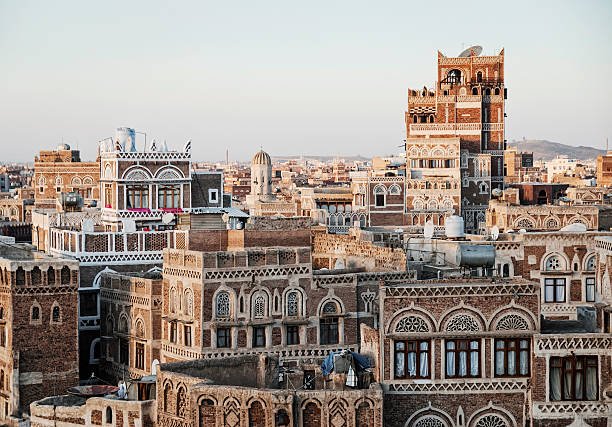
Geographical Border
Yemen shares a 1,458-kilometre border with Saudi Arabia along its southern frontier. The boundary traverses diverse terrain, from mountainous regions in the west to desert landscapes in the east, with the Sharurah and Al Wadiah serving as principal crossing points.
Cultural Ties
Deep-rooted cultural connections bind Yemen and Saudi Arabia through shared tribal lineages, linguistic heritage, and Islamic traditions. Many Yemeni families maintain historical ties with Saudi communities, particularly in the kingdom’s southern regions, fostering cultural exchange despite current challenges.
Economic Partnerships
Traditional trade routes historically connected both nations, though current economic relations face limitations due to regional instability. Cross-border commerce, once vibrant, now operates under enhanced security protocols, focusing primarily on essential goods and humanitarian support.
Historical Context
The relationship between Yemen and Saudi Arabia spans centuries of interaction, marked by periods of cooperation and tension. Border demarcation agreements in 2000 helped establish clear territorial boundaries, though regional developments have since impacted bilateral relations.
Impact on Travel
Current security considerations significantly influence cross-border movement, with strict protocols governing travel between the nations. Air travel remains the primary mode of transport for necessary business and family visits.
Impact on Expatriates
The expatriate community, particularly Yemeni professionals in Saudi Arabia, maintains important economic links between the countries. Work permit processes and residency regulations reflect current regional dynamics while preserving established professional connections.
Bahrain

Maritime Boundary
Bahrain and Saudi Arabia share maritime borders in the Persian Gulf, connected by the 25-kilometre King Fahd Causeway. This strategic waterway serves as a vital link for trade, with both nations coordinating closely on maritime security and resource management.
Cultural Ties
Strong cultural bonds unite Bahrain and Saudi Arabia through shared Gulf Arab traditions, Islamic heritage, and similar social customs. Regular cultural exchanges, particularly in arts and traditional crafts, reinforce these connections while preserving each nation’s unique identity.
Economic Partnerships
The King Fahd Causeway facilitates robust economic cooperation, supporting daily cross-border commerce and business activities. Joint ventures in finance, tourism, and manufacturing strengthen bilateral trade relations, while shared oil and gas projects demonstrate their energy sector collaboration.
Historical Context
Relations between Bahrain and Saudi Arabia reflect centuries of maritime trade and tribal connections. The construction of the King Fahd Causeway in 1986 marked a significant milestone, transforming their relationship into a modern strategic partnership.
Impact on Travel
The causeway enables seamless travel between both countries, serving approximately 75,000 travellers daily. Regular flights also connect major cities, supporting business operations and tourism development.
Impact on Expatriates
Professionals benefit from integrated labour markets and similar business environments. The proximity and connectivity facilitate cross-border employment opportunities, while cultural similarities ease expatriate integration in both nations.
Iran
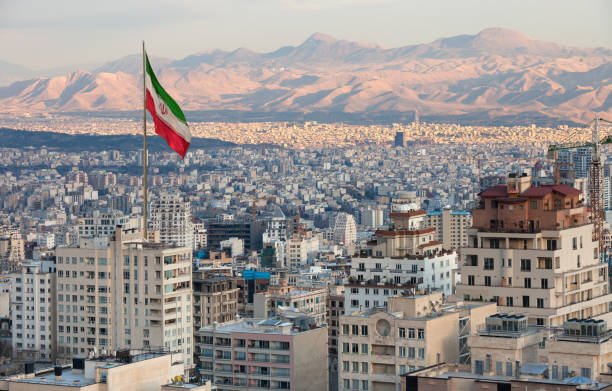
Maritime Boundary
Iran and Saudi Arabia share maritime borders across the Persian Gulf, with strategic waterways vital for global oil transportation. The maritime boundary encompasses important shipping lanes and offshore oil fields, requiring careful coordination between both nations.
Cultural Ties
Despite religious differences between predominantly Shia Iran and Sunni Saudi Arabia, centuries of Persian-Arab cultural exchange have left lasting influences in architecture, cuisine, and literature. Historical trade routes fostered linguistic borrowings and shared artistic traditions that persist today.
Economic Partnerships
Limited economic cooperation exists primarily through OPEC membership and regulated trade channels. Bilateral commerce remains restricted due to international sanctions and regional tensions, though indirect trade continues through third-party nations.
Historical Context
Relations have fluctuated significantly since the 1979 Iranian Revolution, marked by periods of diplomatic engagement and tension. Regional rivalries and differing political ideologies have shaped their complex relationship, influencing broader Middle Eastern dynamics.
Impact on Travel
Direct travel between the nations remains limited, with most movement occurring through third countries. Religious pilgrimage represents one of the few exceptions, allowing controlled Iranian visits to Saudi holy sites.
Impact on Expatriates
Small expatriate communities maintain minimal presence in both countries, operating under strict regulations. Professional exchanges face significant restrictions, though humanitarian and religious connections continue under specific protocols.
Iran’s unique position in Saudi diplomacy reflects broader regional complexities, balancing historical ties with contemporary challenges in the Gulf’s geopolitical landscape.
Conclusively
Saudi Arabia’s relationship with its neighbours represents a complex tapestry of historical connections, modern diplomatic challenges, and strategic partnerships. From the stable alliances with Gulf Cooperation Council members to the more nuanced relations with Iran, each border relationship plays a crucial role in shaping regional dynamics and international relations.
As the kingdom continues to pursue its Vision 2030 objectives and adapt to changing global dynamics, these neighbouring relationships will become increasingly important. The future of Saudi Arabia’s regional influence and economic development remains inextricably linked to its ability to maintain and enhance these vital cross-border connections whilst navigating the complex geopolitical landscape of the Middle East.
Learn more about the Kingdom of Saudi Arabia with us at SaudiTravelandleisure.com


